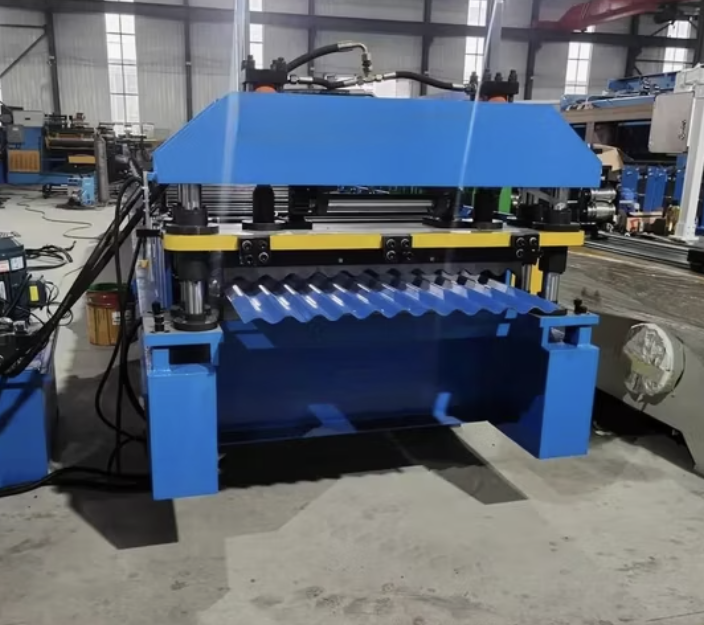To express an interest in this machine please submit the form below.

Not Sure What Machine You Need?
Select Your Profile, We'll Match It
Choose your desired profile drawing, and let Machine Matcher connect you with the best roll forming machine tailored to your needs.
Browse Profiles



A corrugated roll forming machine is a specialized industrial machine designed to produce corrugated metal sheets. These sheets are widely used in roofing, cladding, fencing, and various other applications in construction and infrastructure projects. Known for their durability, lightweight properties, and aesthetic appeal, corrugated sheets are highly popular in the USA, particularly in residential, commercial, and industrial construction.
A corrugated roll forming machine transforms flat metal coils into corrugated sheets through a series of precision rollers. The machine operates in a continuous process, ensuring uniformity and high production efficiency. It is customizable to produce different corrugation profiles based on specific requirements, making it an indispensable tool for manufacturers and contractors.
Q1: What materials can be used with a corrugated roll forming machine?
A1: The machine can process various materials such as galvanized steel, aluminum, and pre-painted steel. The material thickness typically ranges from 0.3 mm to 0.8 mm.
Q2: How customizable is the machine for different profiles?
A2: The machine is highly customizable. You can adjust the corrugation height, pitch, and wave type based on your requirements.
Q3: Is the machine compatible with USA power supply standards?
A3: Yes, the machine can be configured for 220V/60Hz or 380V/60Hz, which are standard in the USA.
Q4: What safety features are included?
A4: Safety enclosures, emergency stop buttons, and overload protection are standard features to ensure operator safety.
Q5: What is the average production speed of the machine?
A5: The standard production speed is 10–15 m/min, with high-speed options up to 30 m/min available.
Q6: Can I integrate the machine with an automatic stacker?
A6: Yes, automatic stackers and other handling systems can be integrated to improve efficiency.
Q7: How long does it take to install and set up the machine?
A7: The installation process typically takes 3–5 days, depending on the level of customization and factory conditions.
Q8: Is training provided for machine operation?
A8: Most manufacturers provide on-site training or virtual guidance for operators to ensure efficient use of the machine.
A corrugated roll forming machine is a critical investment for manufacturers in the USA, offering high efficiency, precision, and versatility. With customizable options and robust performance, these machines cater to a wide range of industrial needs. By understanding the specifications, setup process, and maintenance requirements, you can ensure optimal use of this valuable equipment.
Copyright 2025 © Machine Matcher.